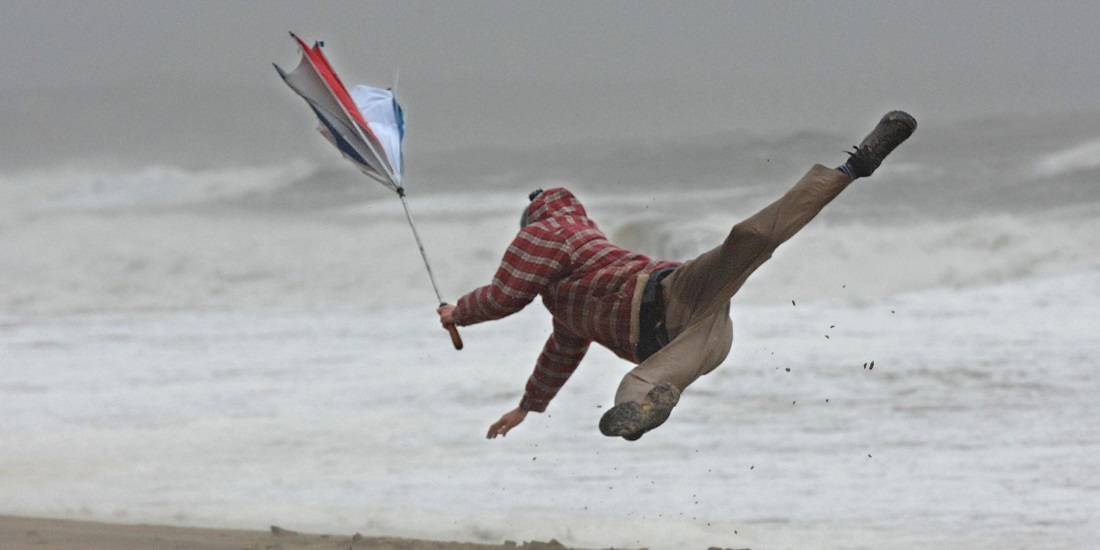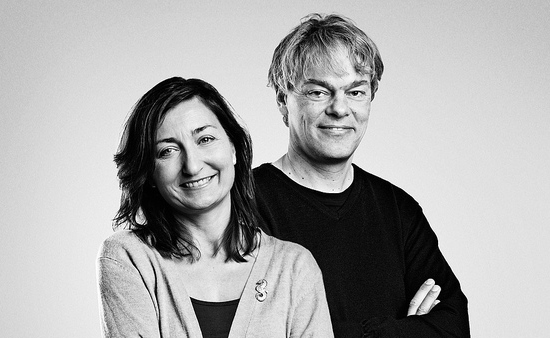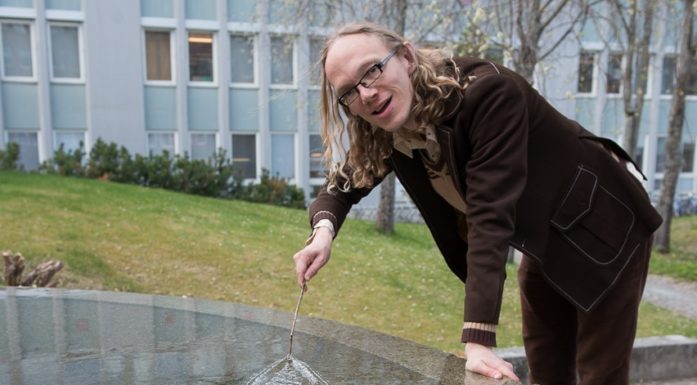Finding order in chaos wins the prize
The Nobel Prize in Physics is going to three individuals who found that the world isn’t always as chaotic as we think.
The world is a chaotic place for many of us. Countless coincidences interfere with each other in our everyday lives. Few people can say that their lives are going exactly as planned, because coincidences intervene.
The world appears chaotic otherwise too, whether you look at everything that’s in motion in a forest or a lake full of fish, the traffic picture in a city, your nervous system or the weather and climate on our planet. Chaos reigns.
But – are we really talking about chaos here?
What if a system is embedded in this chaos? Do these apparent coincidences perhaps embody basic contexts that we just haven’t discovered yet? What if the chaos arises from a simple starting point?
It turns out that these possibilities can all be true, at least in some cases. Hidden order and starting points can lead to apparent chaos. And the new Nobel Laureates in physics have found some of them.
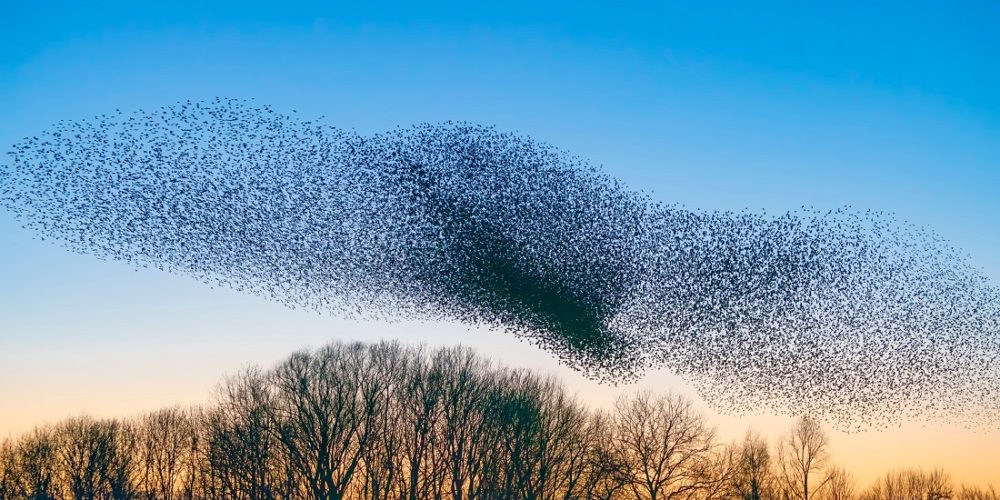
A flock of starlings. Here there is order in the chaos, if we can find the central organizing idea that creates the order. Photo: Albert Beukhof, Shutterstock NTB.
System behind complex materials
The Italian Giorgio Parisi is one of the three award recipients of the Nobel Prize in Physics this year. He has been among the favourites for a long time.
“Parisi has received all the awards that are often bestowed before the Nobel Prize,” says Paul Gunnar Dommersnes, a professor at NTNU’s Department of Physics.
Parisi is one of the pioneers. He developed a theoretical description for hidden patterns in what’s called “complex materials” as early as in the 1980s. These materials often consist of substances that appear to be randomly composed at the molecular level, in contrast to crystals where the atoms are ordered. Parisi found that these complex materials also contain a form of order.
By the way, physicists don’t talk about “chaos.” They refer to it as “complexity” instead.

A blacktip reef shark hunting in a school of fish. At the core of the apparent chaos in the school, there is also order. Photo: Shutterstock, NTB
Both fish and fowl
Being a physicist must be frustrating at times, because often almost no one knows what you are talking about, perhaps with the exception of people in offices next to you. But Professor Jon Otto Fossum sits in one of Dommersnes’ neighbouring offices – and he understands everything.
“People say that what we’re working on is neither fish nor fowl, but they’re wrong. Our research involves both fish and fowl, and more,” says Fossum.
So there’s a basic starting point. Something leads to something else.
A flock of birds or a school of fish are examples of apparent chaos, but there’s obviously some order here as well. The fowl and the fish follow each other in patterns, where one individual’s movements transfer to the next individual — and the next and the next and so on.
So there’s a basic starting point. Something leads to something else. The starting point in the case of birds leads to common movement patterns in the whole flock. In the case of Covid-19, it was the appearance of the virus, its widespread dispersal and perhaps its eventual disappearance. A connection has a cause and vice versa. The only thing that is predictable is that the world is unpredictable.
Patterns in weather and climate
While Parisi was among the pioneers of ordering chaos at the micro level, the other two Nobel Prize winners have found patterns in two of the most chaotic things we are able to observe: the weather and the climate on our planet.
The Japanese-born American Syukuro Manabe studied how greater concentrations of carbon in the atmosphere can affect rising temperatures on Earth, the factor that we associate most with global warming. He developed simpler models in the 1960s that have laid the foundation for climate models today.
Hasselmann created a model that links weather and climate, so that global warming can be predicted.
Klaus Hasselmann from Germany developed our understanding of the connection between the weather and the climate. The weather is what surrounds us all the time, whereas climate is long-term, where the average changes occur over a long period of time.
Hasselmann created a model that links weather and climate, so that global warming can be predicted, even if the weather from day to day and year to year appears to be completely chaotic. Sorry, “complex.”

Weather and climate are linked. As researchers learn more, they can make better climate models. What role do humans play? Illustration: Amanda Carden, Shutterstock, NTB
Is it complex or complicated?
Complex and complicated are not the same thing. Complex means that something is composed of many parts, while complicated is more or less the same as difficult.
How can we turn chaos into order?
A human being is complex, for example, but making one is neither complex nor complicated as long as you know the procedure and the right prerequisites are in place.
So how can physicists turn something that is extremely complex into something simple enough for us to understand, and perhaps even put it to some useful or interesting application?
How can we turn chaos into order?
Eliminating what’s superfluous
Professors Fossum and Dommersnes work with these kinds of questions day in and day out, because this is also their field of expertise.
To get a grip on complex phenomena, you have to simplify and create models, and to do that, you have to identify the essential issue and the fixed rules.
“We work with complex phenomena,” says Fossum.
But to get a grip on complex phenomena, you have to simplify and create models, and to do that, you have to identify the essential issue and the fixed rules. This academic field has been growing since the 1990s.
NTNU’s Department of Physics has collaborated with the Institute for Energy Technology , which has arranged the international Geilo School for PhD candidates since 1971. Here students meet some of the world’s foremost physicists. Since the 1990s, the themes addressed by the school have dealt with complex phenomena.
“This research is about removing redundance,” says Fossum.
- You might also like: What doesn’t crack it makes it stronger
Common descriptions for different complex phenomena?
The weather and climate are complicated enough. But physics encompasses everything in the whole world, from the very tiniest phenomena at the nano level and smaller, all the way up to the universe itself.
One example of complex systems are so-called phase transitions, where substances change from one phase to another.
“Water to ice and water to water vapour are examples of phase transitions,” Fossum says.
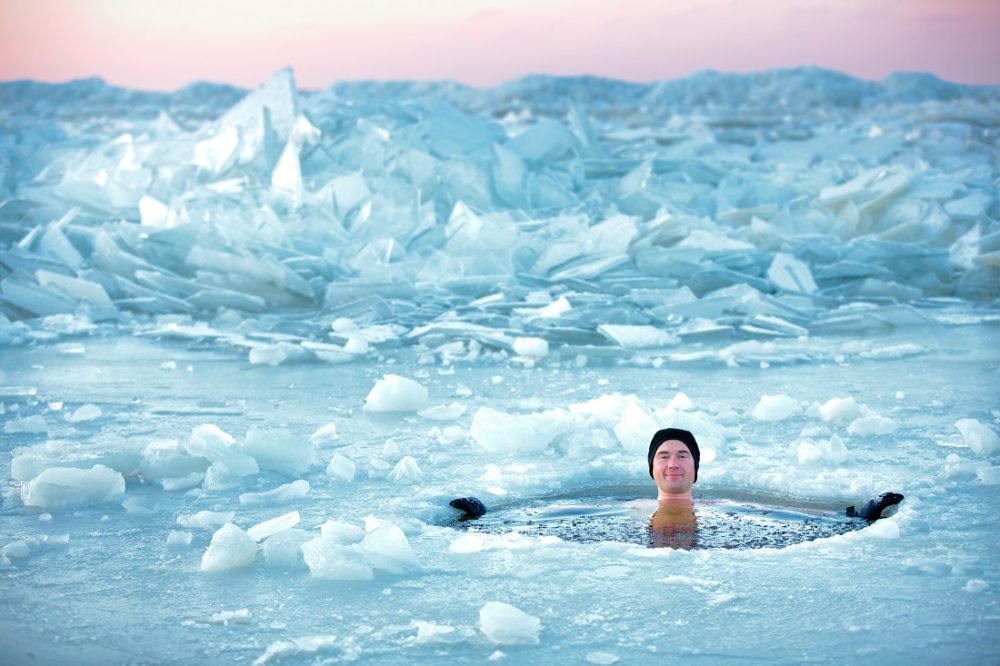
Water or ice? One example of what is called phase transitions is where substances go from one phase to another, such as with water to water vapour. Photo: Shutterstock, NTB
Physicists have been working on understanding phase transitions for about 150 years, and these types of transitions are exactly what they have spent most of their time studying. They want to know exactly why substances go from their solid form to liquid and gas states and back again, or undergo sublimation where solids transition directly to a gas state.
They create models and theories for how the world works the way it does.
These processes can quickly become too difficult to get an overview of. But the central idea behind phase transitions can be simple enough.

Today, physicists often look at even more complex transitions. For example, magnetism. Then thing can get really complicated. The photo shows a magnet attracting iron shavings. Photo: Shutterstock, NTB
The molecules in water have different densities, depending upon whether they are water vapour, liquid or ice. The density describes why the water is in one or the other phase.
Physicists often look at even more complex transitions, like magnetism. This is where things can start to seem complicated, because we’re talking about the spin of particles in atoms, how atoms with different spins are organized in magnetic materials, how atoms affect each other and how we can affect them.
But it is important to eliminate the elements that distract from the central idea here, too. The central idea enables us to understand the underlying principles.
- You might also like: Predicted skewed waves — and found them
Are there any general rules?
One of the most fascinating things about the work of Nobel Prize winner Parisi is that his rules apply not only to complex materials, but are also evident in mathematics, neuroscience, biology, economics and machine learning and other complex areas.
“The work is about identifying complex systems and examining them at different levels. These systems can have common behaviours, laws and equations,” Dommersnes says.
The common features can thus be found within seemingly completely different fields.
“We’re sure that common laws exist behind complex systems. We can see that systems that are vastly different have very similar behaviours when we examine them,” says Fossum.
Parisi is among the researchers who have been searching for a description of complexity, where he and others are well on the way to having found a universal theory.
But what can we do with this kind of information?
The topic is of course interesting from a purely academic point of view, and some would say that it is a duty of sorts for humans to familiarize ourselves with the laws of nature as best we can, in order to understand the world we live in.

Somethings that are complex arises on its own. Nanoparticles come together on their own due to basic physical laws. When we know how, we can influence the process. Illustration photo: Shutterstock, NTB
But it’s also really fun and useful.
Some complexity arises on its own
When you understand the rules for how something transitions from chaos to order and from order to chaos, you’ve acquired a tool that you just might be able to use.
“Some things that are complex arise on their own,” Fossum says.
He points to self-organization as an example, where small building blocks, on their own, group themselves into complex materials. At the nano level, we can observe how particles interact with each other and form patterns to achieve equilibrium and reduce the free energy in the system.
Nanoparticles assemble all by themselves due to basic physical laws. Once we know how nanoparticles do that, we can influence how they self-organize and make sure they achieve the functionalities we want.
This self-organizing property can be relevant in nanoelectronics, where building electronic components that work together at the nano level is a goal. Or for medicine, where we can tailor molecules that bring medicine directly to the parts of the body that need it.
Complexity and big opportunities
Our understanding of complexity could also possibly be used to create “animate materials.” These are almost like living materials that perceive and adapt to changes in the environment, and even alter their properties as a result.
Maybe we could develop materials that remember, learn and adapt. That would almost be as if the physicists had created a form of life.
The basics are actually pretty simple. The materials change on their own based on changes in the environment, energy level, materials or nutrients around them. We can influence the materials if we know the rules.
Maybe we could develop materials that remember, learn and adapt. That would almost be as if the physicists had created a form of life.
“Maybe we can train materials like Pavlov trained his dogs,” Fossum says.
Ivan Pavlov received the Nobel Prize in Physiology or Medicine in 1904. Pavlov’s research included studying dogs that learned to associate the sound of a bell with food, which is referred to as “classical conditioning.” The animals were thus not directly influenced by the food or the smell of food, but by a seemingly unrelated, external influence.
Can we trigger materials to change behaviour in a similar way – and to remember it until later?
All this circles back around to understanding the connections and laws of order and chaos.
Pretty exciting Nobel Prizes, these, aren’t they?
If you would like to learn more, you can read about this and much more on the home page of the Soft and Complex Matter Lab, where Fossum og Dommersnes work.
